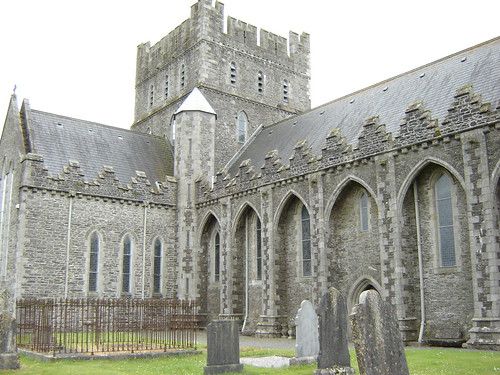Source: Anglicized Irish
Variations: Irish- Brighid, Bríd; English- Brigid; Germanic/ Scandinavian- Brigitta, French- Brigitte, Finnish- Piritta, Welsh- Ffraid, Polish- Brygida.
Meaning: "exalted one"
Nickname: Biddy, Britta, Britt
Bridget is a wonderful place to start off this series. It is a name that has history and mystery.
In Irish this name is Brighid or Bríd. Both of which would be pronounced like "breed." Originally Brighid was a Celtic goddess. She is found all over the old Celtic world. She was the goddess of fire and poetry. In Roman Britain she was referred to as Brigantia. Representations of the goddess took an Athena-like form.

Christianity came to Ireland in a unique way. Irish traditions were not completely swept away from Roman traditions. Instead, the original Irish Christians took a lot of the culture with them when they converted. No one knows whether or not there really was a Saint Brigid. The life of Saint Brigid that survives has many stories that sound like they were influenced by the ancient pagan traditions. In these tales, Brigid displays her sainthood through hanging her clothing out to dry on a rainbow and other miracles. One thing that is certain. She was seen as a saint of the home and the abbey. The miracles that are attributed to her early life have to do with churning, milking, sewing and other household duties.

Brigid is thought to have founded a double monestary at Kildare in 470. Double monestaries are interesting. They would be built like a typical monestary for men, but they would have either a divided church with two entrances (one side for monks and one for nuns) that would be served by one priest; or they may have two separate chapels for the nuns and monks. Even though Brigid would have been the abbess of her nuns, there would have been a male authority in charge of the monks and essentially the nuns as well. Kildare Abbey became a great center of learning. The original abbey was destroyed in the 12th century, which probably means it was sacked Vikings. The following is a picture of the church buildings that stand on the spot today. By my approximation it is a late Medieval building. The abbey was again closed under the reign of Elizabeth I.

Even though much of what is known about Brigid from the lives is most likely legend, I greatly admire the Irish instinct to take their culture and traditions and rework them in a God-centered way. I don't think her pagan past makes Brigid unacceptable. Instead, I see evidence of enthusiastic conversion on the part of the Irish. Even the old gods must be converted to Christianity.
If you want to know more about St. Brigid here are a few links.
St. Brigid feast traditions from Fish Eaters
Catholic Encyclopedia
Information about Kildare Abbey
Behind the Name info
Not to be confused with St. Bridget/Brigitta of Sweden
No comments:
Post a Comment